
Baltic Germans were ethnic German inhabitants of the eastern shores of the Baltic Sea, in what today are Estonia and Latvia. Since their coerced resettlement in 1939, Baltic Germans have markedly declined as a geographically determined ethnic group. However, it is estimated that several thousand people with some form of (Baltic) German identity still reside in Latvia and Estonia.
An estate is a large parcel of land under single ownership, which would historically generate income for its owner.
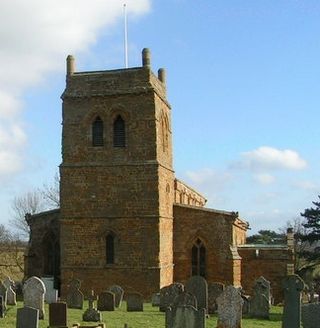
Harlestone is a small village and civil parish in West Northamptonshire, England. The village had a recorded population of 445 in the 2011 census.

Svinia is a village of some 1,500 people in eastern Slovakia about 8 kilometres (5.0 mi) west from Prešov. The village covers an area of 14.734 square kilometres (5.689 sq mi). Svinia is located in the Šariš Highlands in the valley of Veľká and Mala Svinka. The village is one of the oldest villages in the former Šariš County. The village belonged to the Hungarian Merše family from Budapest from 1262 to 1918. Until 1262, the settlement of Svinia belonged to Bár-Kalán ban of Slavonia.
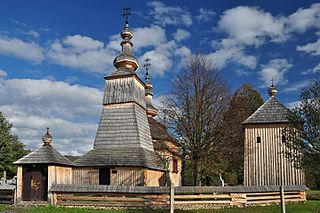
Ladomirová is a village and municipality in Svidník District in the Prešov Region of north-eastern Slovakia.

Tiszadada is a village in Szabolcs-Szatmár-Bereg county, in the Northern Great Plain region of eastern Hungary.
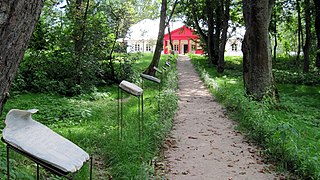
Krasnogruda is a village in the administrative district of Gmina Sejny, within Sejny County, Podlaskie Voivodeship, in north-eastern Poland, close to the border with Lithuania.
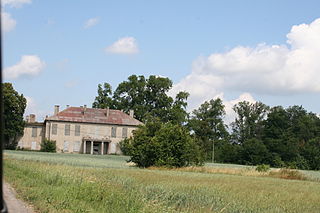
Czyste is a village in the administrative district of Gmina Inowrocław, within Inowrocław County, Kuyavian-Pomeranian Voivodeship, in north-central Poland.

Cēre Manor is a manor house in Cēres Parish in Tukums Municipality in the historical region of Courland, in western Latvia.

Jaunauce Manor is a manor house in Jaunauce parish in Saldus municipality in the historical region of Courland, in western Latvia.
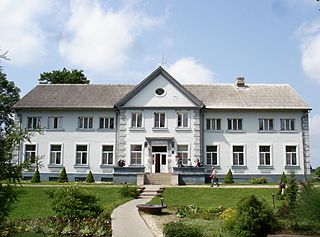
Lielmēmele Manor, also called Mēmele, is a manor house in Mazzalve Parish, Nereta Municipality in the historical region of Selonia, in Latvia.

Reņģe Manor, also called Ruba Manor, is a manor house for the von Nolcken family that was built between 1881 and 1882 in the historical region of Zemgale, in Latvia. It is located about 2.5 km west of both the village of Ruba and the railroad bridge where the Glūda–Reņģe Railway crosses the Vadakste river along the border of Latvia and Lithuania. Manor building currently houses the Ruba Elementary School.
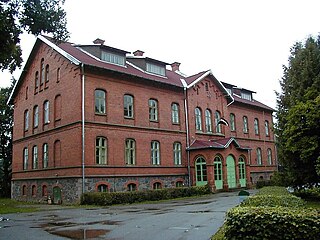
Skaistkalne Manor, also called Šēnberga Manor, is a manor house in the historical region of Zemgale, in Latvia. It is located in the village of Skaistkalne near the Mēmele River on the border of Latvia and Lithuania.

Zante Manor is a manor house in Zante, Zante Parish, Tukums Municipality in the Courland region of Latvia. In 1925 it became a school building. From 1953 to 1963 the manor housed the Zante secondary school, but it now houses the Zante primary school.
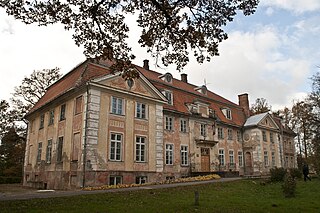
Ozolmuiža Manor is an Early Classicism style manor house built for Count George Johann von Mellinn at the end of the 18th century in the historical region of Vidzeme, northern Latvia.
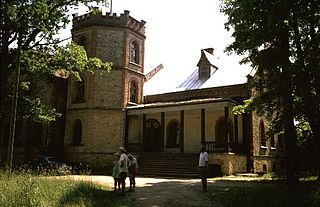
Zvārtava Manor is a manor house in Gaujiena Parish, Smiltene Municipality in the historical region of Vidzeme, northern Latvia. It was built in 1881 in Tudor Neo-Gothic style.

Mežotne Palace is a manor house located in Mežotne municipality in Bauska district, in the Semigallia region of Latvia. The palace is one of the most outstanding examples of Neoclassical architecture in Latvia.

Vácrátót is a village and commune in the comitatus of Pest in Hungary.
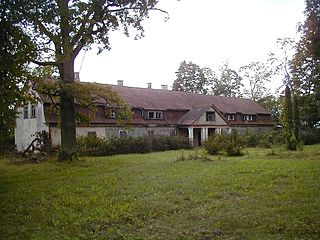
Liepa manor is a manor house located in Liepa Parish, Cēsis Municipality in the Vidzeme region of Latvia, about 100 km away from Riga and 14 km away from Priekuļi. Liepa estate was established in 1672. The current manor house was built during the 19th century. From 1919 to 1970 it housed the Liepa primary school.
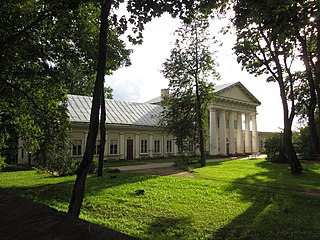
Salos Manor is a former residential manor in Rokiškis district municipality, Lithuania.





















